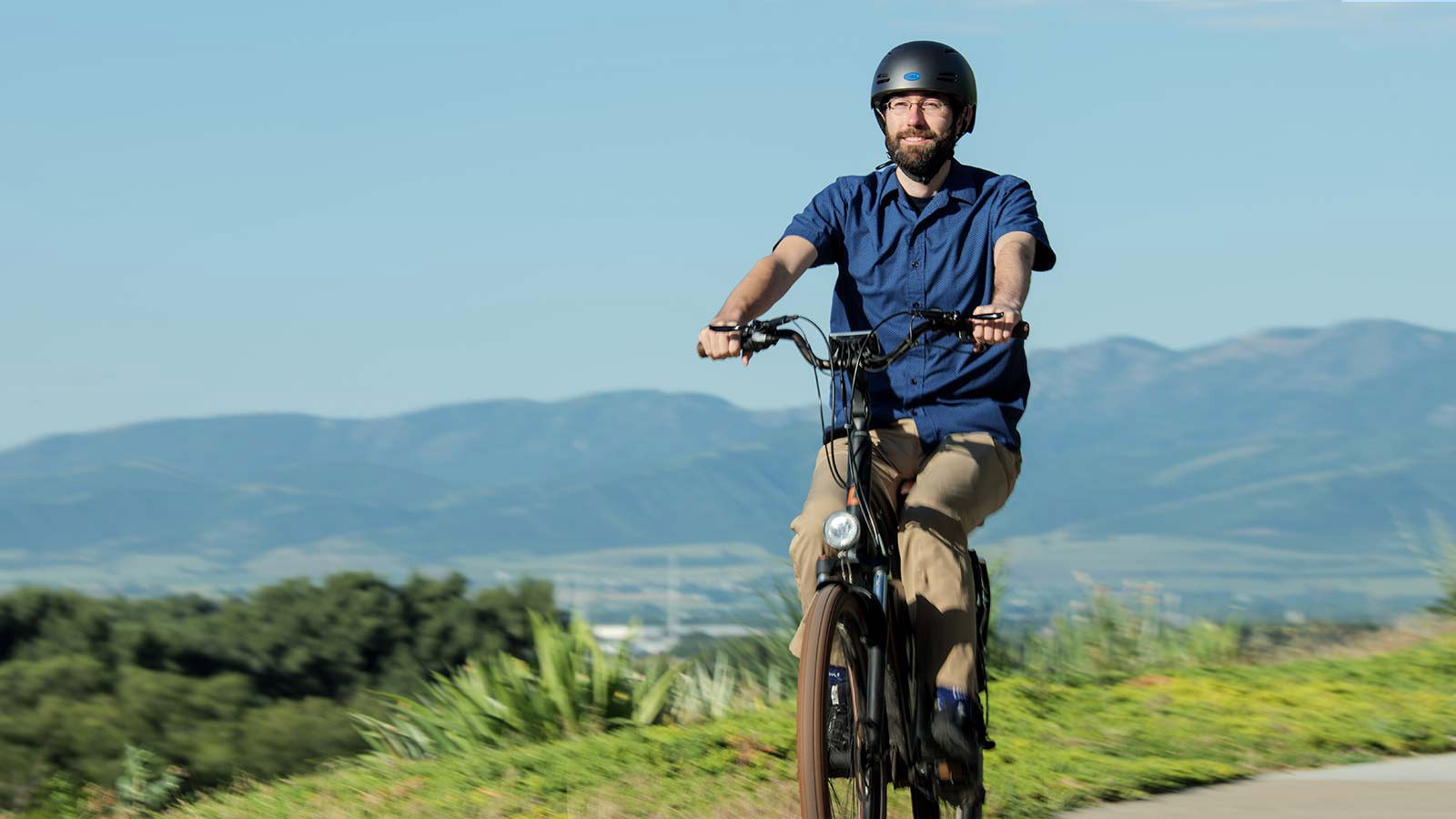Roundabouts Not as Safe for Cyclists, New Research Says
By Anessa Pennington |
Niranjan Poudel is a master's student in civil and environmental engineering, with an emphasis in transportation engineering. His recent research suggests that roundabouts, though used as a measure to improve safety, may make roads more dangerous for cyclists. Photo: Matt Jensen.
Converting intersections to roundabouts has been shown to dramatically reduce crashes, injuries and fatalities, but a closer look at the research reveals that roundabouts do not improve safety for cyclists as much as for drivers. In fact, they may actually increase bicycle crashes, especially for roundabouts with on-roadway bike lanes or no bicycle facilities.
The finding comes from a recently published paper by transportation engineering graduate student Niranjan Poudel and assistant professor Patrick Singleton. Their research was published in the journal Transport Reviews and was also featured in an article on the website CyclingTips.
To understand bicycle safety at roundabouts, Poudel and Singleton reviewed 49 research articles; most were from northern Europe, where cycling is common, but they also used papers from Australia, New Zealand, Canada and the United States. While roundabouts are often implemented to make the flow of traffic safer, current research suggests that cyclists don’t experience the same level of improved safety as do drivers.
That’s not to say that roundabouts should be abandoned altogether. Poudel explained that roundabouts can be designed to better accommodate cyclists.
“These studies suggest that bicycle lanes within a roundabout are more dangerous for bicyclists,” said Poudel. “A separated cycle path with proper yielding procedures is supposed to be the safest.”
Their research also revealed other characteristics of cyclist-safe roundabouts: those with fewer cars, lower speeds and only one lane, for example. Smaller roundabouts with larger or higher central islands were also safer.
This publication is part of a broader research project supported to analyze cyclists’ preferences for and comfort with different design and operational elements of roundabouts. Singleton hopes it “will inform practice around creating roundabouts that are safer and more comfortable for people bicycling of all ages and abilities.”
Patrick Singleton is an assistant professor of civil and environmental engineering. He studies a number of transportation engineering topics, including transportation planning, travel behavior theory and analysis, and traffic safety. Photo: Levi Sim.
WRITER
Anessa Pennington
Public Relations Specialist
College of Engineering
435-797-7512
anessa.pennington@usu.edu
CONTACT
Patrick Singleton
Assistant Professor
Civil and Environmental Engineering
434-797-7109
Patrick.singleton@usu.edu
TOPICS
Research 901stories Engineering 349stories Bikes 23storiesComments and questions regarding this article may be directed to the contact person listed on this page.









